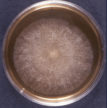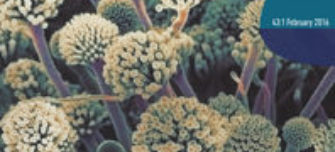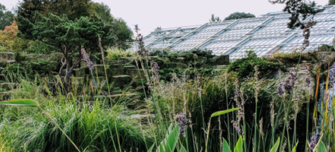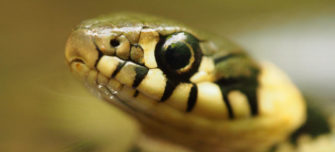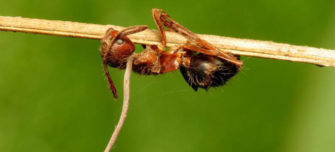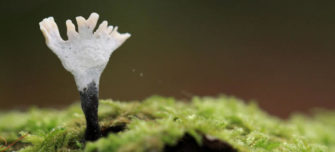Fungi
Types of fungi
Fungi are subdivided on the basis of their life cycles, the presence or structure of their fruiting body and the arrangement of and type of spores (reproductive or distributional cells) they produce.
The three major groups of fungi are:
- Multicellular filamentous moulds.
- Macroscopic filamentous fungi that form large fruiting bodies. Sometimes the group is referred to as ‘mushrooms’, but the mushroom is just the part of the fungus we see above ground which is also known as the fruiting body.
- Single celled microscopic yeasts.
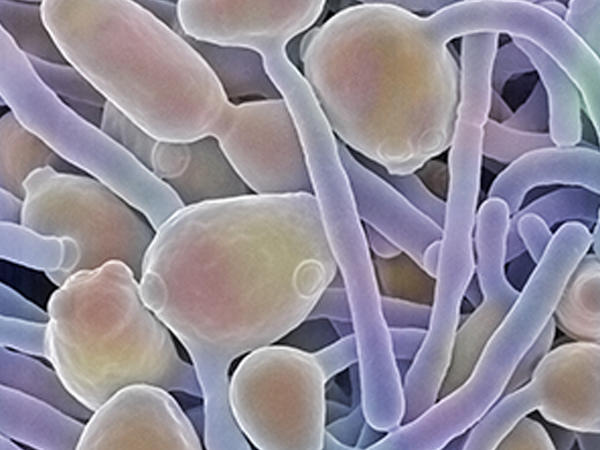
Multicellular filamentous moulds
Moulds are made up of very fine threads (hyphae). Hyphae grow at the tip and divide repeatedly along their length creating long and branching chains. The hyphae keep growing and intertwining until they form a network of threads called a mycelium. Digestive enzymes are secreted from the hyphal tip. These enzymes break down the organic matter found in the soil into smaller molecules which are used by the fungus as food.
Some of the hyphal branches grow into the air and spores form on these aerial branches. Spores are specialised structures with a protective coat that shields them from harsh environmental conditions such as drying out and high temperatures. They are so small that between 500 – 1000 could fit on a pin head.
Spores are similar to seeds as they enable the fungus to reproduce. Wind, rain or insects spread spores. They eventually land in new habitats and if conditions are right, they start to grow and produce new hyphae. As fungi can’t move they use spores to find a new environment where there are fewer competing organisms.
Macroscopic filamentous fungi
Macroscopic filamentous fungi also grow by producing a mycelium below ground. They differ from moulds because they produce visible fruiting bodies (commonly known as mushrooms or toadstools) that hold the spores. The fruiting body is made up of tightly packed hyphae which divide to produce the different parts of the fungal structure, for example the cap and the stem. Gills underneath the cap are covered with spores and a 10 cm diameter cap can produce up to 100 million spores per hour.
Yeasts
Yeasts are small, lemon-shaped single cells that are about the same size as red blood cells. They multiply by budding a daughter cell off from the original parent cell. Scars can be seen on the surface of the yeast cell where buds have broken off. Yeasts such as Saccharomyces play an important role in the production of bread and in brewing. Yeasts are also one of the most widely used model organisms for genetic studies, for example in cancer research. Other species of yeast such as Candida are opportunistic pathogens and cause infections in individuals who do not have a healthy immune system.
-
Observing fungi in a Petri dish
Educational resource for students: Observing fungal cultures in a Petri dish and learning about colony morphology.
Video
Learn more about fungi
-
Fungal diseases
Fungal diseases can have a devastating effect on our health and our environment. From mycotoxins and mycoviruses to the mechanisms of infection of Chalara fraxinea, Candida and Cryptococcus, we touch on the many ways fungal diseases can affect people, animals and plants in this issue of Microbiology Today.
-
Human fungal diseases
Over a billion people suffer from superficial fungal infections, such as athlete’s foot and thrush worldwide, while life-threatening fungal infections cause an estimated 1.5 million deaths worldwide each year. This briefing outlines the important, but often overlooked, burden of human fungal diseases on public health.
-
The state of the world's fungi symposium
On 12 September, scientists at the Royal Botanic Gardens, Kew published a comprehensive report on the state of the world’s fungi highlighting the often overlooked importance of this kingdom. To coincide with this, a two-day international symposium was organised.
-
A killer snake fungus has been found in wild british snakes for the first time
Snake fungal disease (SFD) is of growing concern in the eastern US, where it’s causing declines in already fragile snake populations. Now, for the first time, SFD has been detected in wild snakes outside America – here in Great Britain it’s been found in grass snakes, while in mainland Europe a single infected dice snake has been identified.
-
The fungus that makes zombie ants could use biological clocks to control their minds
Ophiocordyceps spores infect carpenter ants while they are out at night searching for food. The fungus grows inside the ant and eventually causes it to leave the nest, seek out a piece of vegetation and climb it.
-
Pioneer fungi start degrading dead wood before it hits the ground
Next time you go walking in a forest during the summer months, take a look up and see if you can spot any branches missing their leaves. It might not seem obvious at first, but you’re looking at a poorly understood, although rather important, ecosystem.
Podcasts

